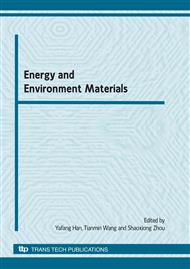p.168
p.172
p.178
p.186
p.193
p.199
p.205
p.210
p.214
Variation of the Reversed Austenite Amount with the Tempering Temperature in a Fe-13%Cr-4%Ni-Mo Martensitic Stainless Steel
Abstract:
Tempering temperature dependence of the amount of the reversed austenite in the range of 570 oC to 680 oC was investigated by means of X-ray diffraction (XRD) measurements and transmission electron microscopy (TEM) in a low carbon Fe-13%Cr-4%Ni-Mo (wt.%) martensitic stainless steel. It was found that the reversed austenite began to form at the tempered temperature slightly above the As temperature. As the tempered temperature increased, the amount of the reversed austenite changed little in the temperature range of 580-595 oC. Then, the amount of the reversed austenite increased sharply with the increased tempered temperature. When the tempered temperature increased to about 620 oC, the amount of the reversed austenite exhibited a peak. Afterward, it decreased quickly at the elevated tempered temperature. The microstructural evolvement of the reversed austenite at different tempering temperature was also observed by TEM.
Info:
Periodical:
Pages:
193-198
Citation:
Online since:
May 2010
Authors:
Keywords:
Price:
Сopyright:
© 2010 Trans Tech Publications Ltd. All Rights Reserved
Share:
Citation:


